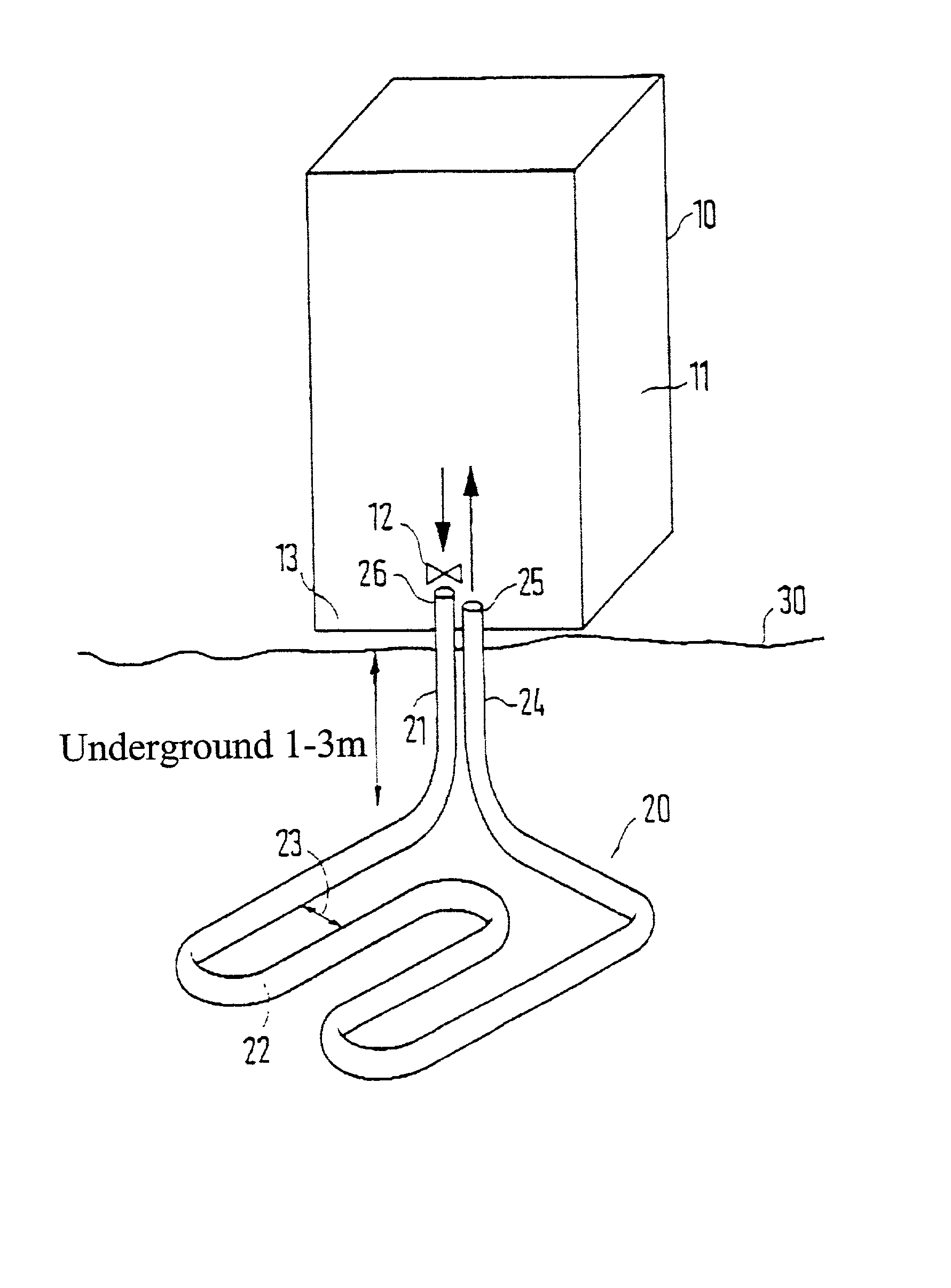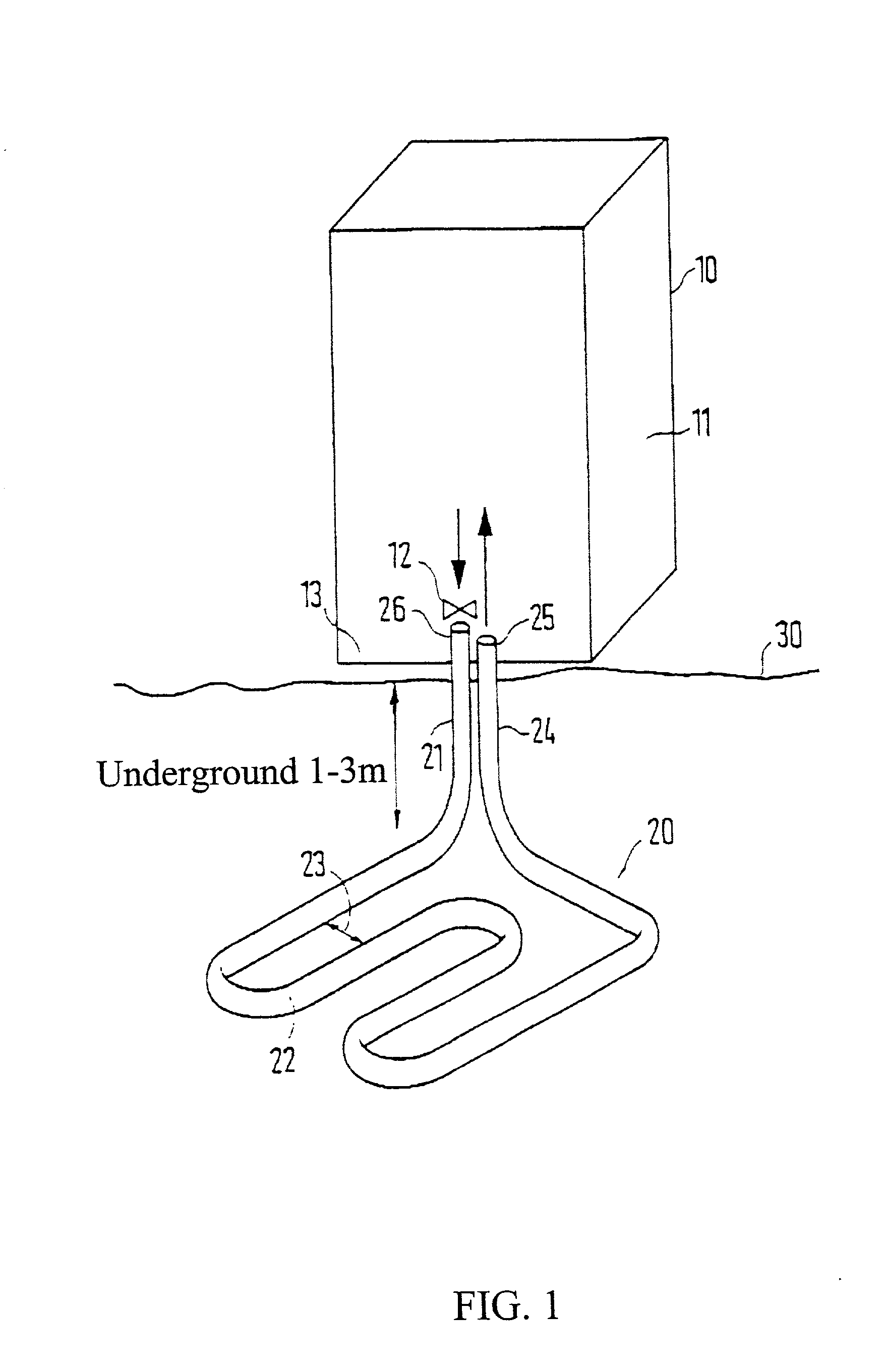Switchgear cabinet with an air-conditioning device
a technology of air-conditioning device and switchgear cabinet, which is applied in the direction of heat production device, indirect heat exchanger, light and heating apparatus, etc., can solve the problem of relatively large energy consumption of air-conditioners of this typ
- Summary
- Abstract
- Description
- Claims
- Application Information
AI Technical Summary
Benefits of technology
Problems solved by technology
Method used
Image
Examples
Embodiment Construction
[0021] As shown in the drawing, a switchgear cabinet 10 is placed above ground level 30. The switchgear cabinet 10 has a switchgear cabinet base 13 which is fixed in place on a concrete seal set in the ground. The outlet line 21 and the inlet line 24 of an underground heat exchanger 20 project out of the concrete seal. The outlet line 21 forms the aspirating opening 26, and the inlet line 24 forms the exhaust opening 25. A fan 12 is assigned to the aspirating opening 26. The fan 12 has a direct current motor, which is operated by a battery maintained in the interior 11 of the switchgear cabinet. As shown in the drawing, the fan 12 is also arranged in the interior of the switchgear cabinet. Thus it does not transmit any, or only negligible, noise emissions to the outside. The underground heat exchanger 20 is embodied as a flexible plastic pipe, which is placed into the ground in a meander shape. In the present case, the depth of placement is selected to be between one and three meter...
PUM
 Login to View More
Login to View More Abstract
Description
Claims
Application Information
 Login to View More
Login to View More - R&D
- Intellectual Property
- Life Sciences
- Materials
- Tech Scout
- Unparalleled Data Quality
- Higher Quality Content
- 60% Fewer Hallucinations
Browse by: Latest US Patents, China's latest patents, Technical Efficacy Thesaurus, Application Domain, Technology Topic, Popular Technical Reports.
© 2025 PatSnap. All rights reserved.Legal|Privacy policy|Modern Slavery Act Transparency Statement|Sitemap|About US| Contact US: help@patsnap.com


